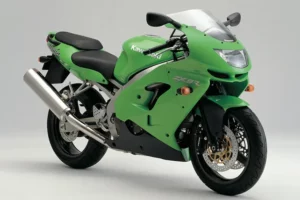Kawasaki has a history of introducing various engine models and exploring technologies, including electric, hydrogen, and hybrid systems, alongside their internal combustion engine offerings.
They have been committed to maintaining their engine development and production expertise, even as the industry trends shift towards alternative power sources. This dedication ensures that their technological advancements and supply chains remain intact.

Mich Superbike creates ZX-9R concept
ZX-9R
Kawasaki reviving the ZX-9R based on the Z900 with a 948cc inline 4 engine sounds intriguing. The ZX-9R has a history of being a sporty and versatile motorcycle, and bringing it back in a “Neo Classic Super Sports” style could appeal to a broader range of riders.

Kawasaki Z900
With a target output of a little over 125ps and a price range of around approximately $ 9,300 for the standard version and approximately $ 11,400 for an advanced version with upgraded components, it could balance performance and affordability.
Additionally, the emergence of the Yamaha YZF-R9 as a potential rival to the ZX-9R. The YZF-R9, rumoured to be based on the MT-09, is expected to be a hyper supersport motorcycle with a maximum output of 120ps and various electronic controls. Yamaha may release it in 2024 or 2025.

Kawasaki made Ninja ZX-9R from 1994-2003
Neo-classic segment
Regarding the neo-classic segment, which has gained popularity with models like the Z900RS, you suggested that Kawasaki could explore an endurance racer route similar to MV Agusta’s Super Veloce or Triumph’s Speed Triple RR.
The idea of developing a neo-classic endurance racer based on the Z900 and complementing it with the new ZX-9R sounds interesting. It could offer a comfortable riding position suitable for long distances, appealing to riders seeking a durable and enjoyable machine.
Ninja – ZX9R concept by Mich Superbike
Potential pros and cons to consider regarding the prediction and ideas
Pros:
- Maintaining Internal Combustion Engine Expertise: By continuing to develop and produce internal combustion engine motorcycles, Kawasaki can retain its expertise in this technology, ensuring that they remain at the forefront of innovation in this area.
- Utilizing the Advantages of Internal Combustion Engines: Internal combustion engines still offer advantages in lightweight design and high-output performance, particularly in super sports motorcycles. By focusing on these strengths, Kawasaki can cater to riders who value these characteristics over alternative power sources.
- Broader Appeal and Affordability: By introducing more affordable, authentic motorcycles that are not solely race-oriented, Kawasaki can appeal to a broader range of riders who seek performance and value for money. This approach may attract riders who prefer balancing everyday usability and sporty characteristics.
- Neo-Classic Design Trend: Leveraging the popularity of the neo-classic design trend, Kawasaki can tap into the market demand for retro-styled motorcycles while incorporating modern features and technology. This approach can attract riders who appreciate the nostalgic aesthetic combined with contemporary performance.
Cons:
- The Industry Trends: The motorcycle industry is gradually shifting towards alternative power sources, such as electric motorcycles and hybrid systems. By primarily focusing on internal combustion engines, Kawasaki may face challenges aligning with evolving environmental regulations and market demands.
- Sustainability Concerns: Internal combustion engines produce emissions and contribute to environmental pollution. As sustainability becomes a growing concern, Kawasaki’s commitment to internal combustion engines may be viewed unfavourably by environmentally conscious consumers and regulatory bodies.
- Competing with Alternative Technologies: While there is a market for high-performance internal combustion engine motorcycles, the competition from electric motorcycles and other alternative technologies is intensifying. Kawasaki may face increasing pressure to invest in and develop alternative powertrain options to remain competitive in the evolving market.
- Uncertainty of Market Acceptance: Predicting market acceptance and success is inherently uncertain. While the predicted models, such as the revived ZX-9R, may seem appealing on paper, various factors can influence their reception, including price, features, competition, and consumer preferences.
Conclusion
The predictions and ideas regarding Kawasaki’s potential future motorcycle models, particularly the Kawasaki Ninja ZX-9R and its derivation from the Z900 base model, offer some intriguing possibilities.
Focus
By maintaining its focus on internal combustion engine motorcycles, Kawasaki can continue to leverage their expertise in this area and cater to riders who value the advantages offered by these engines, such as lightweight design and high-output performance. Including a “Neo Classic Super Sports” variant aligns with the current trend of blending classic styling with modern performance, which could broaden the appeal of Kawasaki motorcycles.
The shift
However, it’s essential to consider the potential challenges and uncertainties that may arise. The shift in industry trends towards alternative power sources and increased emphasis on sustainability could pose challenges for Kawasaki’s commitment to internal combustion engines. Additionally, competing with alternative technologies and the uncertain market acceptance of predicted models must be considered.
Outcome
Ultimately, the outcome will depend on various factors, including Kawasaki’s strategic decisions, market demands, regulatory requirements, and consumer preferences. While the ideas and predictions presented are intriguing, it’s essential to remain open to the possibility of changes and adaptations in the motorcycle industry as it evolves.
Yamaha- R9 concept by Mich Superbike
When will we see the Ninja ZX-9R?
It’s hard to say when we’ll see a new Kawasaki ZX-9R. Kawasaki has not yet announced any plans to revive the bike, but there have been some rumours that it could happen shortly.
If Kawasaki decides to revive the ZX-9R, we likely won’t see it until 2024 or 2025. This is because Kawasaki typically takes a few years to develop new motorcycles, and they would need to ensure that the ZX-9R is competitive with other bikes in the supersport class.
May not revive
Of course, it’s also possible that Kawasaki will never revive the ZX-9R. Several factors could affect their decision, such as the popularity of the supersport class and development cost.
So, if you’re hoping to see a new Kawasaki ZX-9R, you’ll have to wait and see what happens. But if the rumours are true, it could be an exhilarating bike.

































